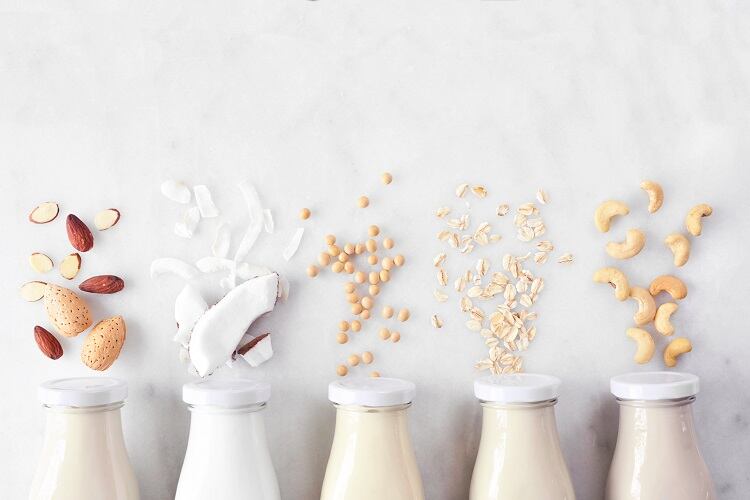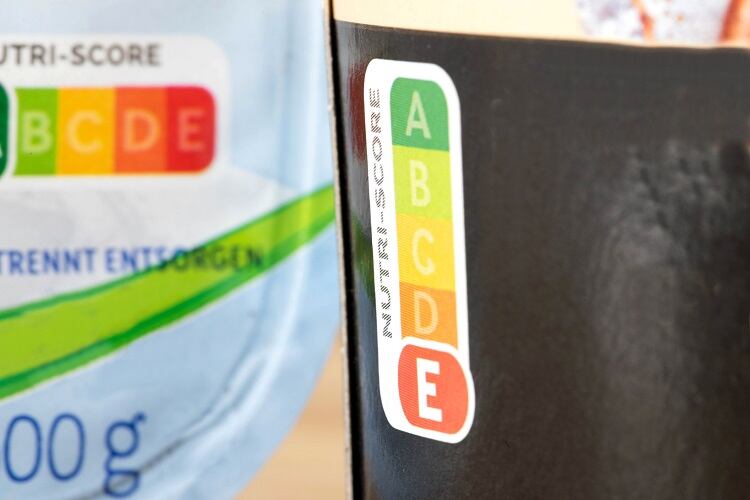A new algorithm update has been adopted for front-of-pack nutrition labelling scheme Nutri-Score. Unlike the 2022 algorithm update which focused on general food, this latest update concerns beverages.
Nutri-Score’s current classification of high-sugar beverages will remain the same, but changes are under way for its classification of milk-based beverages with high levels of sugars, low-sugar beverages, and beverages with non-nutritive sweeteners (NNS).
Beverage algorithm updated
The algorithm changes were recommended by the Scientific Committee for the Nutri-Score (ScC) – a transnational governance made up of representatives from Belgium, France, Germany, Luxembourg, the Netherlands, Spain and Switzerland – and adopted 30 March 2023.
One of the biggest changes to Nutri-Score’s assessment of beverages concerns milk, milk-based beverages, fermented milk-based beverages and plant-based beverages, which are now to be included in in the beverage category. Previously they were assessed as a food.
This modification is designed to better classify milk and milk-based beverages, particularly those containing high levels of sugar.
Another big change is the inclusion of a specific component for the use of NNS, which will yield ‘negative points’. The ScC believes this modification will allow for between alignment between the classification of Nutri-Score and public health recommendations regarding NNS.
Nutrition labelling scheme Nutri-Score was developed in France in 2017. Its algorithm ranks food from -15 for the ‘healthiest’ products to +40 for those that are ‘less healthy’. Based on this score, the product receives a letter with a corresponding code: from dark green (A) to dark red (F).
Overall, the ScC hopes the modifications will better categorise beverages according to their sugar content, in particular for beverages containing little sugar.
What impact will Nutri-Score update have on non-dairy drinks?
According to the new modifications, water will be the only beverage that can achieve the highest score of Nutri-Score A. All other beverages, including naturally low-calorie beverages, will be classified between B and E.
Sugar-sweetened beverages with very limited amounts of sugar (<2g/100ml) will be able to achieve an improved classification (B), while those with high amounts of sugar will remain in D/E, which will help better distinguish beverages based on sugar content.

Plant-based drinks, including milk alternatives made from soy, oat, rice or other, can no longer be classified A. Instead, depending on their nutritional composition, they will be classed B to E.
The classification for fruit juices remains unchanged, and for the most part they achieve a C (with some ranked B and a few D) according to their sugar content. Most contain 9-10g/100ml or 15-16g/100ml. This means that although fruit juices may contain vitamins, elevated sugar content can push them into C or D categories.
Milk: Skimmed and semi-skimmed the ‘most favourable’
As to the impact of Nutri-Score’s algorithm on milk and milk-based beverages, skimmed and semi-skimmed milk can be classified in the ‘most favourable’ classes available to beverages (aside from water).
The objective here is to allow differentiation between different milk formats according to their fat and sugar content, explained Serge Hercberg, professor of nutrition at the Université of Sorbonne Paris Nord’s Faculty of Medicine, whose work formed the basis of the original Nutri-Score.
This means that skimmed and partially-skimmed milk are largely in the B category, and whole (full fat) milk in category C. “Some whole milks from other animals than cows may have different nutrient composition (in particular in saturated fatty acids) that may lead them to shift towards lower categories,” explained Hercberg.
Milk-based beverages – a category which includes flavoured or sweetened milks – can no longer be classified as A or B in the Nutri-Score, as they had been done previously. Instead, they are likely to be classified on average as D/E (or C for those with lower sugar content).
Similarly, fermented milk-based beverages (including sweetened and flavoured yogurt drinks) can no longer be classified A, as they had been previously. According to their sugar content, they will rank C or E.
And finally, powder cocoa, coffee or chicory mixes are to be included as beverages for Nutri-Score if their nutritional declaration (per 100ml) is reported ‘as consumed’ (I.e., after being mixed with milk or water) rather than ‘as sold’.
‘Milk should achieve a Nutri-Score A’
The algorithm update has received criticism from industry, mostly for its reclassification of milk from a food to a beverage, which is seeing some skimmed milk products drop from A to B, and whole milk to C.
“Milk is a basic food product which provides a lot of nutrients. Yet [under the new algorithm], it cannot score an A,” Stephan Peters, who heads up nutrition at food law at the Dutch Dairy Association (NZO), told FoodNavigator.
Peters agrees that sugar-sweetened beverages should score lower than an A or B, but not milk. “It’s very important that people drink milk, especially for young people as they grow because it provides essential nutrients. It’s a bit crazy the committee chose for [milk] not to have an A score.”

The algorithm amendments have also made a splash on social media, where director of New Nutrition Business Julian Mellentin tweeted that according to the new algorithm, Nutri-Score would rank whole milk as ‘less healthy’ than Coke Zero.
Frédéric Leroy, professor of food science and biotechnology at Brije Universiteit in Brussels also took to Twitter to lament the algorithm change. For Leroy, the update makes the beverage category ‘even worse than it already was’: “Bye-bye A scores for milk products.”
Fake news?
But for the Université of Sorbonne’s Hercberg, the move of milk, milk-based beverages, fermented milk-based beverages and plant-based beverages to the ‘beverage’ category is logical, since they are liquid. Further, the move allows for more consistency with the generation recommendations of food-based dietary guidelines, he told this publication.
They also help consumers to distinguish between skimmed and semi-skimmed milk (Nutri-Score B), whole milk (Nutri-Score C), and flavoured or sweetened milk (Nutri-Score D and E, but which were previously classified A or B).
As to the whether Coke Zero would score better than whole milk, Hercberg puts this suggestion to bed, describing it as ‘fake news’. Whereas previously Coke Zero achieved a B, it is now moving to a C, which the professor said is more consistent with new dietary guidelines.
“In fact, all soda containing NNS are at least a C, or even D or E for those mixing NNS with sugar.”

Overall, the ScC hopes the new algorithm will strengthen the effectiveness of the Nutri-Score to classify foods and beverages in line with the main dietary recommendations of European countries.
For countries that have already adopted Nutri-Score, they will have from the end of 2023 through to late 2025 to adapt to the new algorithm.


